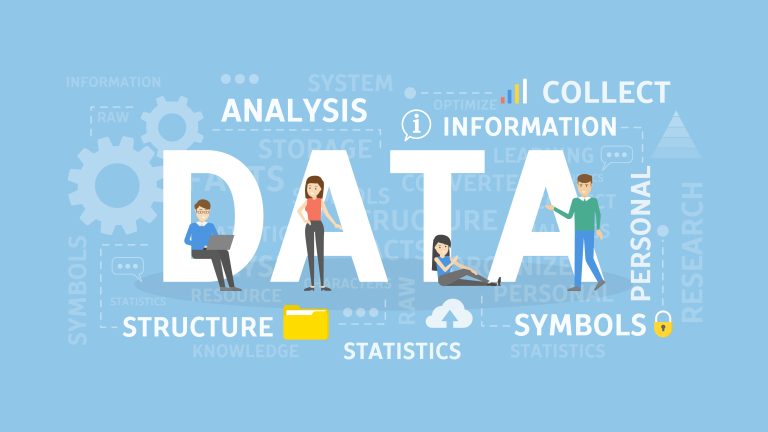Introduction:
In today’s data-driven world, the ability to extract valuable insights from vast amounts of data has become crucial for businesses to gain a competitive edge. Data analytics has emerged as a powerful tool that enables organizations to make informed decisions, identify trends, and optimize their operations. By implementing data analytics effectively, businesses can unlock the potential hidden within their data and drive valuable business insights. In this in-depth blog post, we will explore the key steps involved in implementing data analytics to drive business insights, covering each stage in detail.
Define your business goals:
Implementing data analytics begins with a clear understanding of your business goals. Start by identifying specific areas where data analytics can drive improvements. Do you want to enhance customer retention, optimize supply chain management, improve marketing campaigns, or identify new revenue streams? Defining your goals will guide your data analytics strategy and help you focus your efforts on extracting insights that align with your overall business objectives.
Identify relevant data sources:
After defining your goals, the next step is to identify the relevant data sources that will provide the necessary information to achieve those goals. Start by looking at internal data sources such as customer data, transaction records, sales figures, operational data, and employee performance metrics. External data sources like market data, social media data, industry reports, and competitor analysis can also provide valuable insights. Ensure that the data you collect is relevant, accurate, and up-to-date to avoid bias and ensure the reliability of your insights.
Implement data collection and storage:
To effectively implement data analytics, you need a robust data collection and storage infrastructure. This involves establishing data collection processes and ensuring the availability and accessibility of the required data. Depending on the size and complexity of your data, you may need to set up a data warehouse or utilize cloud-based storage solutions. Consider implementing data governance practices to ensure data quality, security, privacy, and compliance with relevant regulations. Data management techniques such as data cleansing, normalization, and integration should be applied to ensure the accuracy and consistency of your data.
Choose appropriate analytics techniques:
Data analytics encompasses various techniques, each serving a specific purpose. To drive business insights, it’s essential to select the right analytics techniques based on your goals. Descriptive analytics provides a historical view of your data, helping you understand past trends and patterns. Diagnostic analytics helps identify the reasons behind specific outcomes and uncover root causes. Predictive analytics leverages historical data to make future forecasts and anticipate trends. Lastly, prescriptive analytics suggests optimal actions to achieve desired outcomes. Consider the specific insights you are seeking and choose the appropriate techniques accordingly.
Apply data visualization:
Data visualization plays a critical role in making complex data accessible and understandable. It allows you to present data in visually appealing charts, graphs, and dashboards, enabling stakeholders to quickly grasp key insights. Data visualization facilitates the identification of patterns, trends, and outliers, helping you derive actionable insights. Choose visualization tools that align with your needs and provide interactive exploration capabilities to delve deeper into your data. By presenting data visually, you can effectively communicate insights across your organization and facilitate data-driven decision-making.
Leverage machine learning and AI:
Machine learning and artificial intelligence (AI) algorithms can greatly enhance your data analytics efforts by automating processes, identifying patterns, and making predictions. Implementing machine learning models allows you to uncover insights that may not be apparent through traditional analytics methods. By continuously training and refining these models, you can gain valuable insights in real-time and improve decision-making within your organization. Machine learning techniques such as clustering, classification, regression, and recommendation systems can be applied to extract meaningful insights from your data.
Foster a data-driven culture:
Implementing data analytics successfully requires a cultural shift within the organization. It’s important to foster a data-driven culture where data is seen as a strategic asset and analytics is integrated into decision-making processes at all levels. Start by building awareness and understanding of the value of data analytics among employees. Provide training and resources to enhance data literacy across different departments. Encourage cross-functional collaboration and communication to share insights and foster a data-driven mindset. Additionally, establish clear accountability for acting upon analytics insights and monitor the impact of data-driven decisions to drive meaningful change within the organization.
Conclusion:
Implementing data analytics to drive business insights is a transformative process that can revolutionize how organizations operate and make decisions. By following the detailed steps outlined in this blog post, you can harness the power of data to uncover valuable insights, improve operational efficiency, enhance customer experiences, and gain a competitive advantage in today’s data-driven business landscape. Embrace data analytics as a strategic initiative, foster a data-driven culture, and continuously iterate and improve your analytics processes. With a strong foundation in data analytics, you’ll be well-equipped to drive meaningful business insights and propel your organization to new heights.




